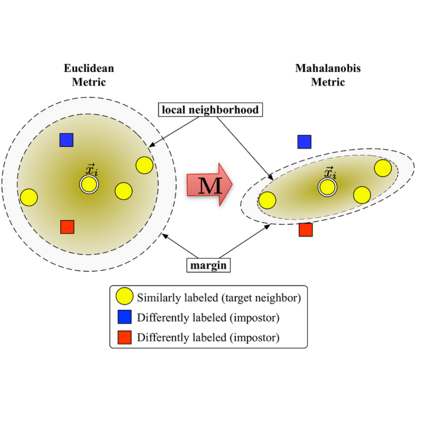We apply deep metric learning for the first time to the prob-lem of classifying planktic foraminifer shells on microscopic images. This species recognition task is an important information source and scientific pillar for reconstructing past climates. All foraminifer CNN recognition pipelines in the literature produce black-box classifiers that lack visualisation options for human experts and cannot be applied to open set problems. Here, we benchmark metric learning against these pipelines, produce the first scientific visualisation of the phenotypic planktic foraminifer morphology space, and demonstrate that metric learning can be used to cluster species unseen during training. We show that metric learning out-performs all published CNN-based state-of-the-art benchmarks in this domain. We evaluate our approach on the 34,640 expert-annotated images of the Endless Forams public library of 35 modern planktic foraminifera species. Our results on this data show leading 92% accuracy (at 0.84 F1-score) in reproducing expert labels on withheld test data, and 66.5% accuracy (at 0.70 F1-score) when clustering species never encountered in training. We conclude that metric learning is highly effective for this domain and serves as an important tool towards expert-in-the-loop automation of microfossil identification. Key code, network weights, and data splits are published with this paper for full reproducibility.
翻译:我们首次对这些管道进行深度衡量学习,对微小图像中的潮湿石质有孔虫贝壳进行分类。这一物种识别任务是重建过去气候的重要信息来源和科学支柱。文献中所有有线电视感知的CNN识别管道都产生黑盒分类器,这些分类器缺乏人类专家的视觉化选项,无法用于打开设定的问题。在这里,我们对这些管道进行基准衡量学习,首次对潮湿石质有孔虫形态空间进行科学直观化,并表明在培训期间可以将光学学习用于未见物种群集。我们显示,光学学学外表外表是所有以CNN为基础的最新科技基准。我们评估了我们关于Endless Forams公共图书馆34 640个专家附加说明的图像的方法,其中35个现代平面图层有线图案。我们的数据结果显示,在重新制作保留测试数据的专家标签时,92%(为0.84 F1-C-Scront) 和66.5 %的精度,我们用这个核心域域图解,我们从未将这一核心数据转化为。




